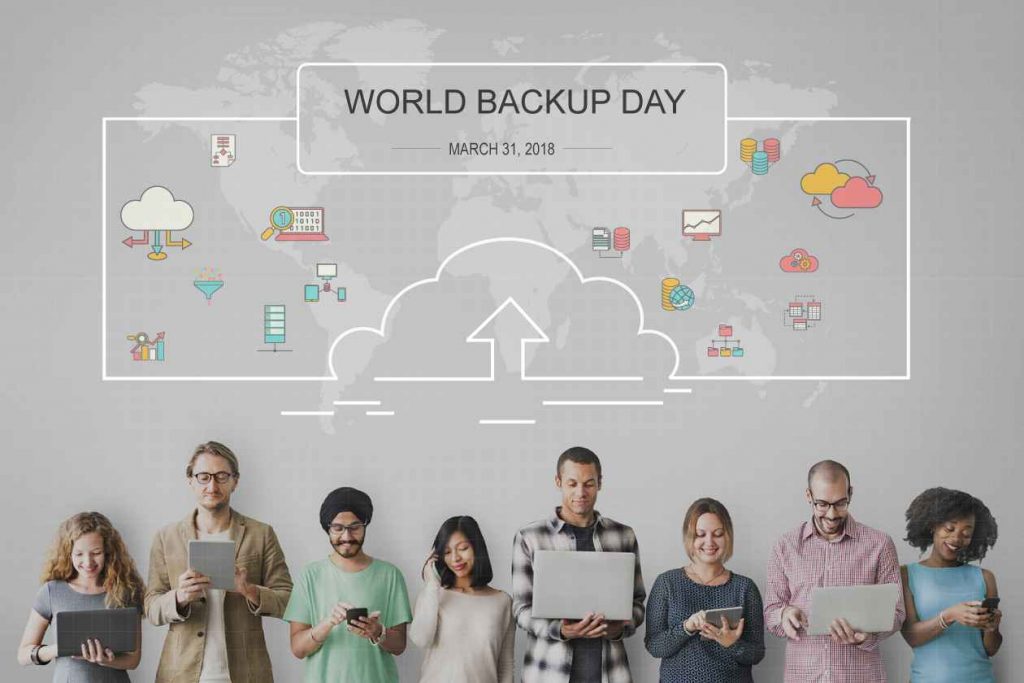It’s World Backup Day – Do You Know Where Your Backups Are?

March 31 is World Backup Day! I actually wasn’t aware until someone told me of this recently. Having spent a good part of my career developing backup solutions, I thought it was quite fitting that something that is considered so routine, automatic, and taken for granted should have its own day to be remembered and celebrated. And in a tongue-in-cheek fashion, the World Backup Day happens to fall on the day before April 1; a sly hint suggesting that if you don’t back up your data, you could be a fool on All Fool’s Day! And, to be honest, I couldn’t agree more.
For this year’s World Backup Day, I thought it would be fitting to rewind the tape (no pun intended) and see how backup technologies developed from their humble beginnings.
From Oral Traditions to Cloud Storage
The motivation to create a backup is probably at least as old as the first incidence of data loss. Most of us tend to think of backups as existing on physical pieces of media, but one could argue that backups possibly pre-date even the development of writing.
Oral traditions, popular since the ice age, were created to keep alive the knowledge of hymns, stories, and epics. They were redundant by design because multiple individuals had this knowledge imparted to them, thus, reducing the possibility of the art or culture dying out due to a single accident.
Of course, the development of writing itself was a form of backup because in addition to its obvious benefit of being able to communicate with a reader one may never meet, it also served as a way to record ideas and events onto media more reliable than human memories.
While stone, leaf, and metal have all, at different times, been used to record writing, the paper has been the gold standard for backups these last several centuries. Even as recently as a few decades ago, it wasn’t unheard of to have forms filled out in “carbon copy” (the reason why you “cc” people on emails today), so a second or a third copy of the data will be recorded for safekeeping.
Read: Cloud Backup and the Importance of Dual Copy
Let’s fast forward to more recent times.
If you think back to the 50s, early computing still relied on paper in the form of punched cards. It was only in the 60s that magnetic media took over in the form of magnetic tape- a roll of magnetic tape at the time could store as much data as 10,000 punch cards! Surprisingly enough, magnetic tape is still used by several organizations to backup data.
The 70s and 80s saw the arrival of floppy disks. Over two decades they shrunk in size, while also increasing in density, effectively providing a way for someone to record as much as 250MB on a form factor that someone could easily slip into their pocket.
The 90s and the early 2000s saw a flurry of creativity in the backup space – both in terms of hardware and software innovations. Optical disks made their entry, and while generally regarded as slow, they had the benefit of being much more reliable than magnetic tapes. So, the use of CDs to hold backups took hold for a while. However, magnetic disks started to get denser, faster, cheaper, and more reliable and, for the first time, were considered as targets for secondary data copies, like backups. USB became mainstream and USB magnetic drives soon replaced Floppy disks and CDs almost universally. Software innovations were introduced in the form of NAS (Network Addressable Storage) and SAN (Storage Area Networks) which allowed for the separation of disks from the server chassis. Later, virtualization solutions, invented around the same time, helped organizations to manage disks more efficiently. Software compression and deduplication became mainstream in backup solutions. This period also saw backup solutions become enterprise-class with centralized policy-based management, reporting, audit logs, etc.
In the current decade, there have been two disruptive technological forces – mobile devices and cloud computing. These have had a dominant influence on the evolution of Backup technologies, which have evolved in creative ways to protect mobile devices, as well as virtual machines and cloud instances.
Read: The Future of End User Computing (EUC)
Backups – you can’t live without them
Backups have not only remained essential but grown to become critical for organizations in recent years. While, in the past, a backup was simply a means to recover lost data, it has today become a necessary part of an organization’s security or compliance posture. Cyber threats like ransomware and rigorous regulations like GDPR have made sure this becomes a reality.
This World Backup Day, we at Parablu are paying homage to the pioneers who came before us and made the technology what it is today. As Sir Isaac Newton famously said, “If I have seen further it is by standing on the shoulders of giants.”
We hope you’ll remember to backup your data this March 31, and welcome April 1 knowing your data is safe and sound.




